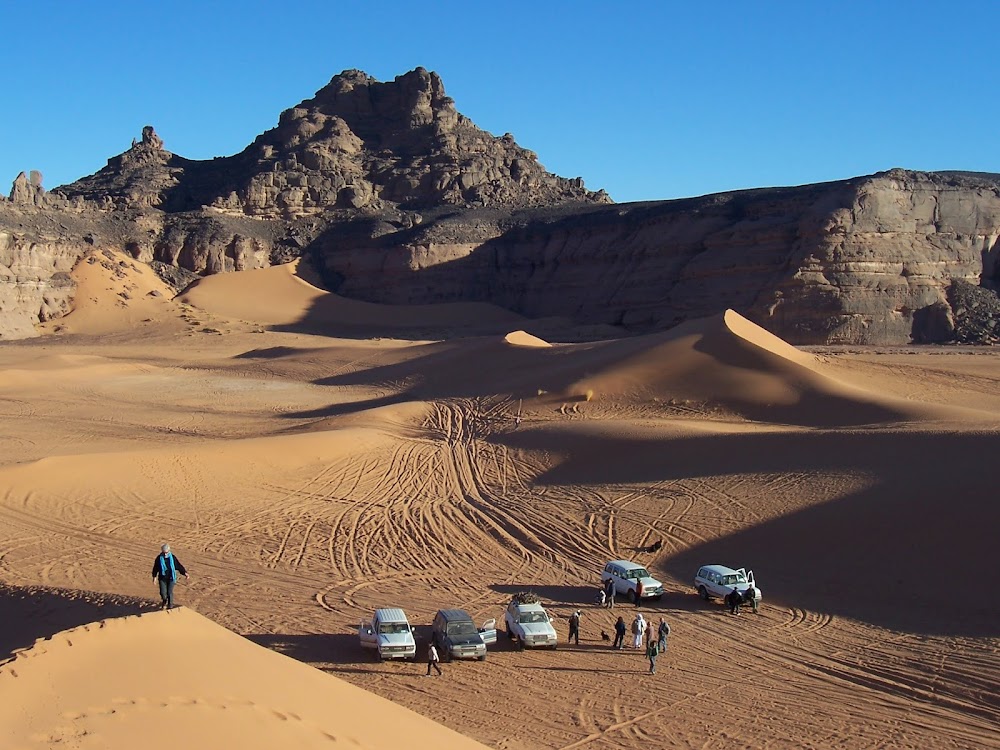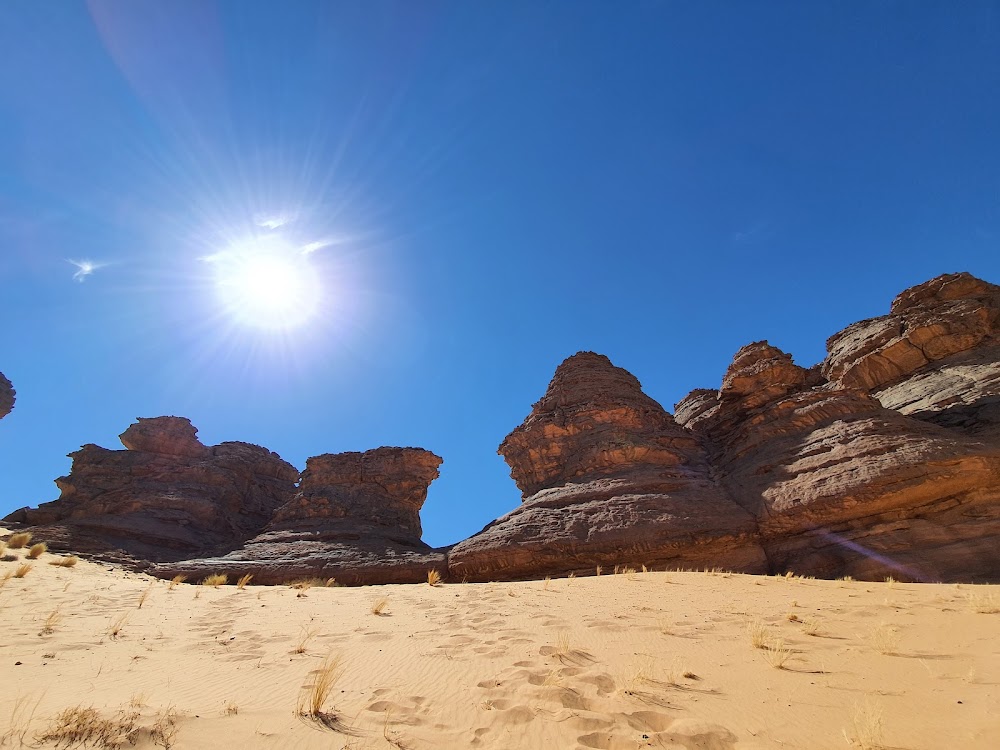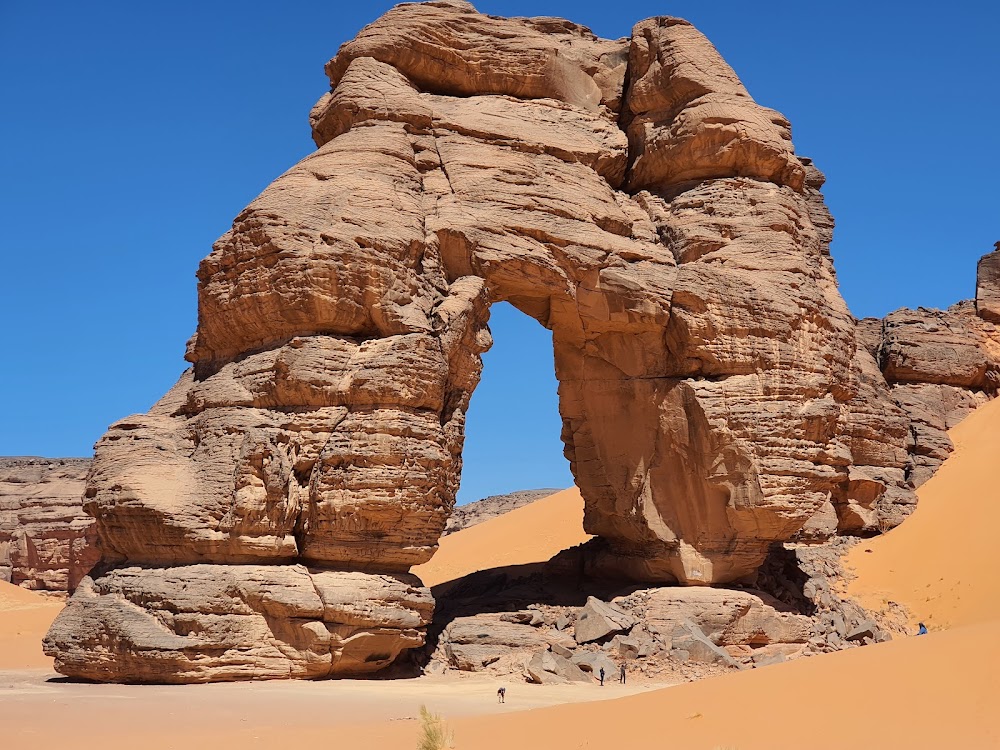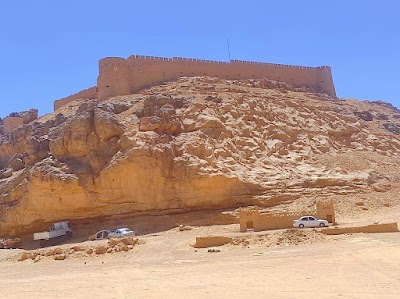Akakus Mountains (جبال أكاكوس)
Overview
Tadrart Acacus, also known as the Akakus Mountains, is a breathtaking mountain range located in the Ghat District of Libya. This extraordinary region is famous for its dramatic landscapes, which include towering sand dunes, picturesque rock arches, deep gorges, and ancient cave paintings that tell stories of a time long past.
Geological Wonders
The formation of the Akakus Mountains dates back millions of years to ancient geological times when the Earth's crust was shifting and folding. This natural phenomenon pushed up rugged peaks and carved out the stunning desert landscape we see today. Over time, the relentless forces of wind and erosion sculpted striking rock formations, creating natural arches, spires, and boulders that seem to belong to another world.
Historical Significance
The Akakus Mountains are steeped in history, particularly through the captivating prehistoric rock art scattered throughout the region. Ancient inhabitants of the Sahara, dating back approximately 12,000 years, left behind an extraordinary collection of carvings and paintings on the rock faces. These artworks depict scenes of daily life, featuring animals such as giraffes, elephants, and cattle, suggesting that the climate was once much wetter, supporting a diverse ecosystem.
Exploring the Art
As you explore the Akakus Mountains, you'll encounter vibrant cave paintings that offer a glimpse into the lives of past civilizations that thrived in this area. Created using natural pigments sourced from the earth and local plants, these artworks capture the social and cultural lives of early societies, preserving their artistic expressions for generations to come.
Access and Adventure
Reaching Tadrart Acacus is an adventure in itself, as the area is primarily accessible by 4x4 vehicles due to its remote location and challenging desert terrain. Most visitors begin their journey from the nearby town of Ghat, which serves as the gateway to the mountains. Ghat is a small yet significant town rich in history and traditional Berber culture, blending ancient mud-brick dwellings with modern amenities.
Guided Expeditions
Tours of the Akakus Mountains typically involve organized expeditions led by experienced local guides who are intimately familiar with the region and its hidden treasures. These knowledgeable guides help visitors navigate the vast desert expanses, ensuring safe and respectful encounters with the captivating rock formations and ancient artworks.
Diverse Ecosystem
Beyond the intriguing rock art, the Akakus Mountains are home to a variety of flora and fauna uniquely adapted to the harsh desert environment. Sparse vegetation, including hardy acacia trees and resilient desert shrubs, thrives in this challenging landscape. Adventurous wildlife, such as lizards, birds, and insects, can also be spotted by the keen-eyed explorer.
Preservation Efforts
The preservation of this remarkable site is of utmost importance. Efforts are continually made to protect and maintain the integrity of the rock art and the natural environment. In recognition of its outstanding universal value, the Tadrart Acacus region was designated a UNESCO World Heritage site in 1985, highlighting the need to safeguard its cultural and natural heritage for future generations.
In conclusion, the Akakus Mountains, with their unique blend of natural beauty and historical significance, offer an enriching experience for those brave enough to venture into this remote corner of Libya. Each rock formation and ancient painting tells a story of a bygone era, inviting visitors to connect with the timeless spirit of the Sahara Desert.







